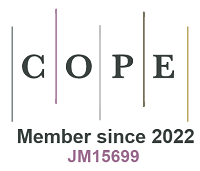Review | Open Access
Micro-/Nano- engineering for battery materials and interface
Views: 4
Chem. Synth. 2025;5:[Accepted].
Author Information
Article Notes
Cite This Article
Abstract
After decades of development, lithium-ion and sodium-ion batteries have established mature material systems, electrode structures and production technologies. In spite of this, high-performance batteries with both favourable energy density and power density are substantially explored to meet the requirement of long-mileage EVs and long-duration energy storage. To balance the contradiction between energy density and power density, engineering micro-/nano- structures is recognized as an effective approach which combines the advantages of both micro- and nanoarchitectures. This paper comprehensively summarizes the micro-/nano- engineering in material production, electrode manufacture, and interface regulation of lithium-ion and sodium-ion batteries. The benefit of micro-/nano- structure on the enhanced cycling life and rate capability is discussed in detail, and the promising engineering strategies in future commercial batteries are envisaged. This review provides a basic understanding of the role of micro-/nano- structural engineering in promoting the battery performance, and also a guidance for the multidimensional and multiscale design of micro/nano-architectures towards practical applications.
Keywords
Micro-/nano- engineering, materials production, electrode manufacture, interface regulation
Cite This Article
Wen T, Rao R, Chen L, Huang R, Zeng Y, Che Z. Micro-/Nano- engineering for battery materials and interface. Chem. Synth. 2025;5:[Accept]. http://dx.doi.org/10.20517/cs.2024.145
Copyright
© The Author(s) 2025. Open Access This article is licensed under a Creative Commons Attribution 4.0 International License (https://creativecommons.org/licenses/by/4.0/), which permits unrestricted use, sharing, adaptation, distribution and reproduction in any medium or format, for any purpose, even commercially, as long as you give appropriate credit to the original author(s) and the source, provide a link to the Creative Commons license, and indicate if changes were made.












